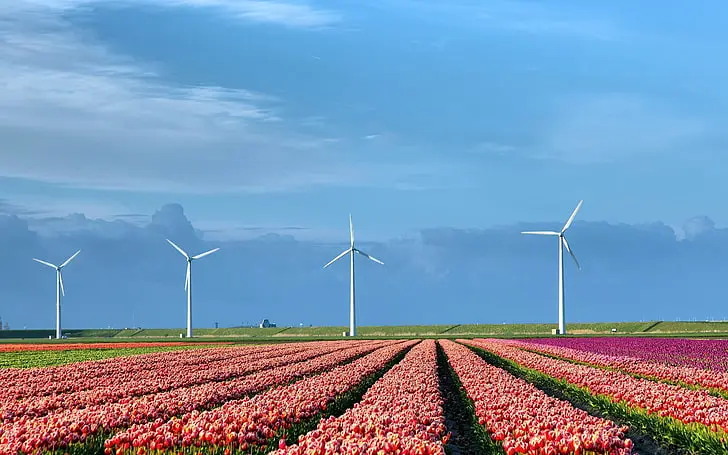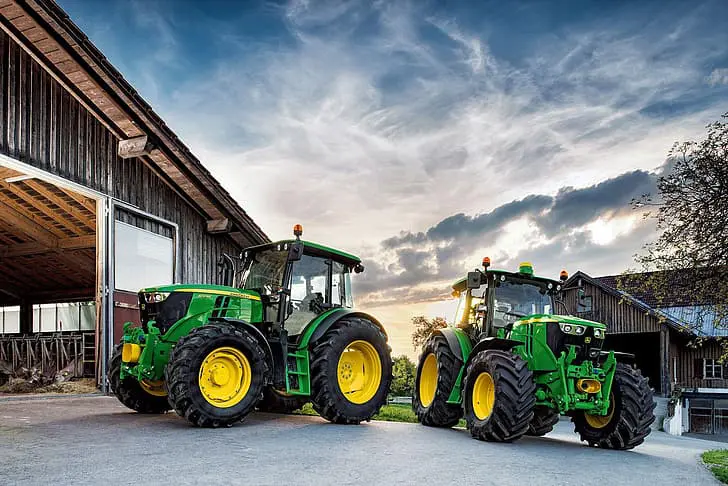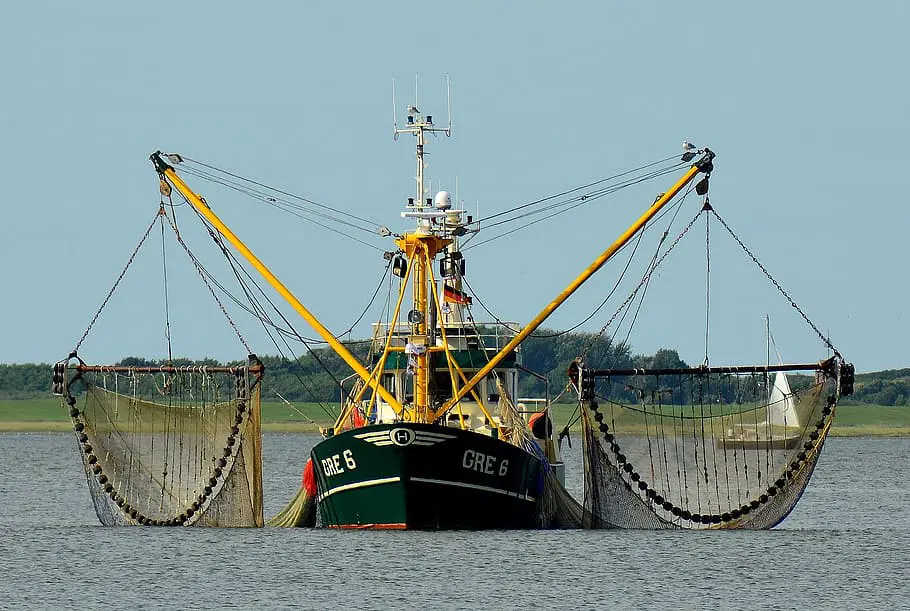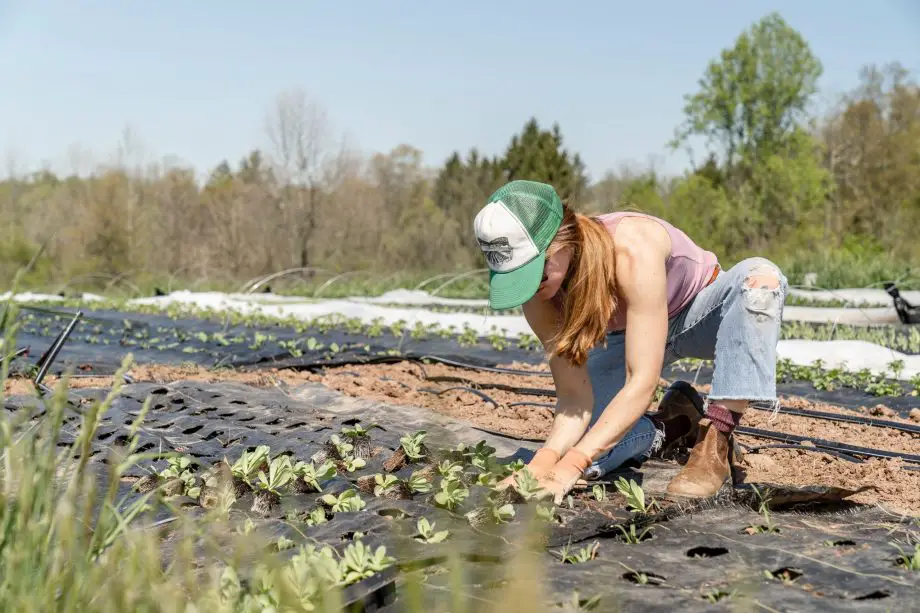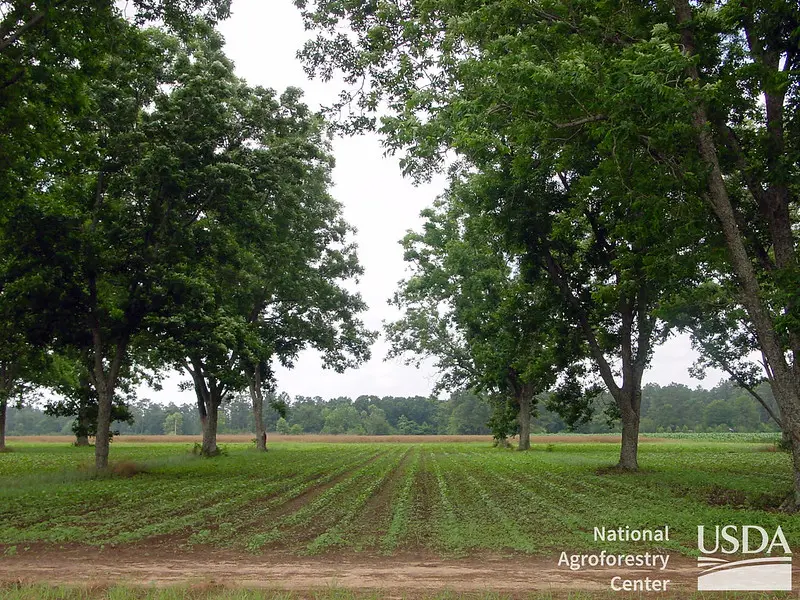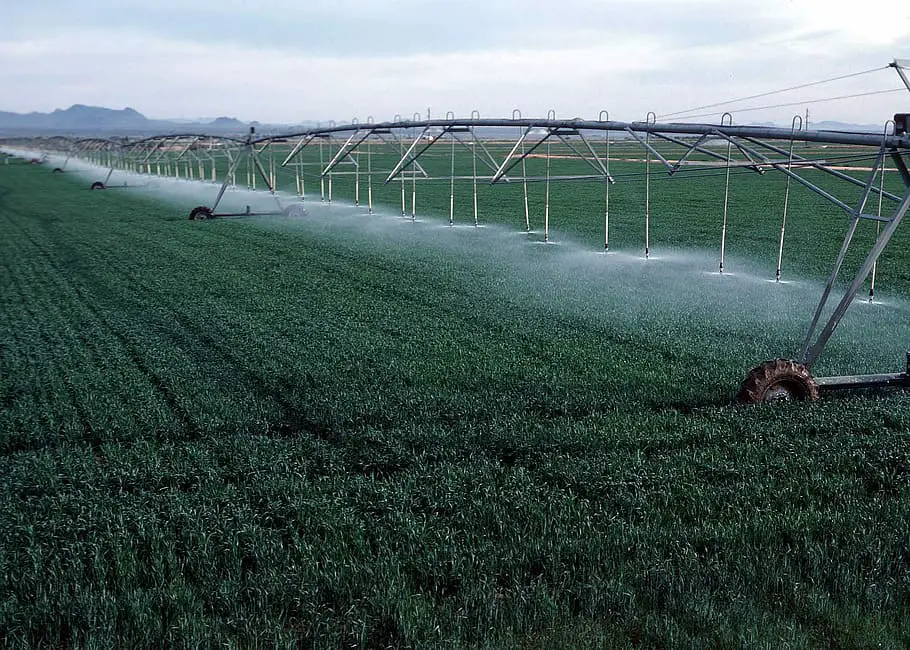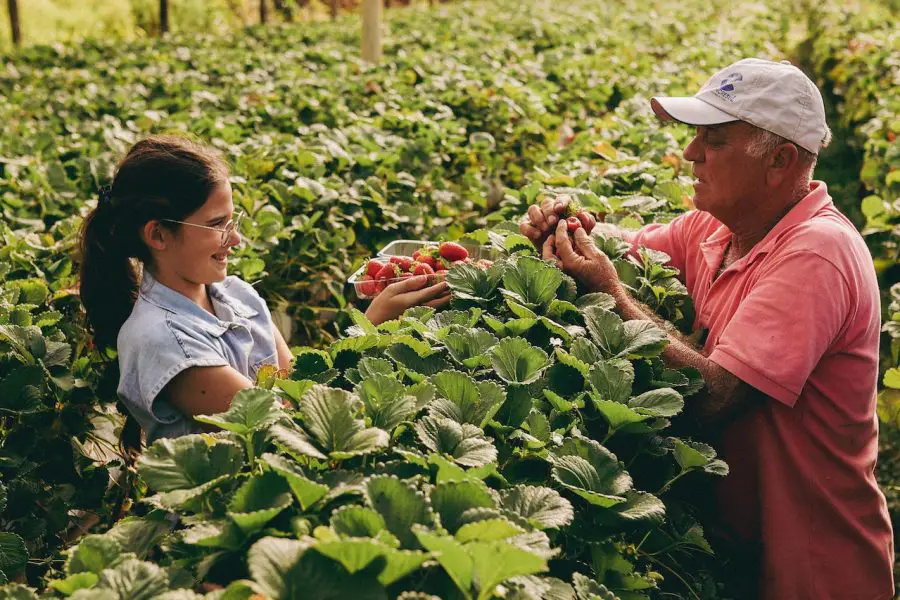
Dive into our guide to uncover what is sustainable agriculture’s main goal and how it’s reshaping our planet’s future, one crop at a time.
Ever found yourself pondering over a cup of coffee, what is sustainable agriculture’s main goal?
Well, grab another brew, because we’re about to journey into the heart of agriculture’s green revolution.
Together, we’ll unravel the mysteries of farming that not only nourishes us but also cherishes the planet. Ready? Let’s dive in!
What is Sustainable Agriculture’s Main Goal?
So, you’ve heard the term thrown around a lot lately and found yourself wondering, what is sustainable agriculture’s main goal?
In this post, we’ll delve into the green heart of agriculture, exploring its core objectives, contrasting it with traditional farming, and even touching on the modern tools driving this movement.
By the end, you’ll be a mini-expert on all things green and growing. Buckle up, it’s going to be an enlightening ride!
Brief overview of the current state of global agriculture
Alright, let’s set the stage. Imagine the global agriculture scene as a bustling kitchen.
For the longest time, we’ve been using the same recipe, handed down over generations.
Crops are grown in vast stretches, usually with a single type dominating the landscape (think vast cornfields or rolling wheat plains).
This approach, often dubbed as ‘conventional farming,’ has given us loads of food, enough to fill up the pantries of billions!
However, just like when you use your stove non-stop, things start to wear out.
The ground is getting tired, water resources are diminishing, and don’t even get me started on the ever-changing weather patterns.
It’s clear that our old recipes might not cut it in the evolving global kitchen.
Environmental and societal challenges associated with traditional farming practices
Now, diving a bit deeper into the issues with our age-old farming playbook.
Remember the thrill of getting a new toy and overusing it, only to find it broken way sooner than expected?
That’s kind of what’s been happening with our beloved Earth.
Firstly, traditional farming gulps down a lot of water, leaving many areas parched.
Then there’s the heavy use of chemicals. These pesky things don’t just stick to the crops; they run off into rivers, harming aquatic life and sometimes even ending up in our drinking water. Yikes!
And on the societal side, large-scale farming often sidelines small farmers.
It’s like the big players getting the largest slice of the pie, leaving crumbs for the rest.
Many farming communities face financial strain, with their traditional knowledge often overshadowed by the rush of industrial agriculture.
In a nutshell? Our trusty old farming methods are starting to show their age, both for Mother Earth and her inhabitants.
But don’t lose hope! That’s where sustainable agriculture swings in to potentially save the day. But more on that later!
Defining Sustainable Agriculture
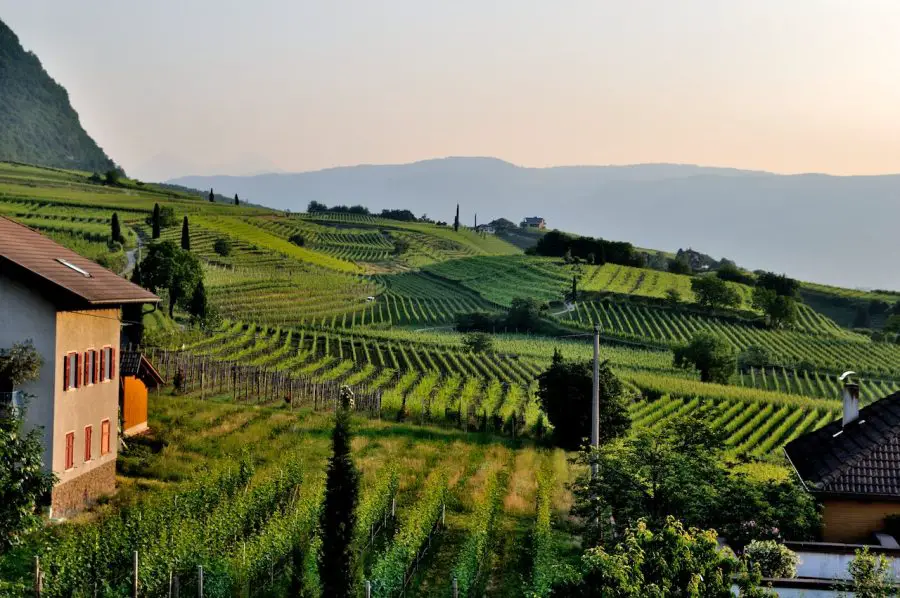
Alright, folks, let’s play a quick game of Word Association. When I say sustainable agriculture, what’s the first thing that pops into your mind? Green fields? Healthier foods? A big question mark, perhaps?
No worries if it’s the latter. We’re here to shed some light on that term, break it down, and really get to the essence of what sustainable agriculture means.
No jargon, I promise just a simple chat between friends. Ready to unravel the mystery? Let’s dive in!
Basic definition and its holistic approach
So, here’s the deal: if sustainable agriculture was a person, they’d be that super thoughtful friend who always remembers your birthday, recycles religiously, and somehow manages to keep all their plants alive (how do they do it?!).
At its core, sustainable agriculture is all about farming in a way that meets our current food needs without compromising the ability of future generations to meet their own.
Think of it as a balancing act—between the environment, economic profitability, and the well-being of everyone involved.
But wait, it doesn’t stop there. Sustainable agriculture isn’t just about producing food; it’s a holistic approach.
This means it considers everything, the soil, the water, the air, the farmers, and even the little bugs that help decompose organic matter.
In short, it’s farming that gives back to the planet as much as, if not more than, it takes.
Contrast with traditional/conventional agriculture
Now, let’s create a mental picture. Remember that classic scene in movies where a character has an angel on one shoulder and a devil on the other?
Imagine sustainable agriculture as the angel, advocating for a balanced, thoughtful approach. On the other shoulder, we have conventional agriculture while definitely not the devil, but maybe a mischievous cousin.
Traditional agriculture has been our go-to method for centuries. It’s like that old pair of sneakers that you’ve had forever and they’re comfy, and reliable, but maybe not the best choice for a marathon.
Conventional farming typically focuses on high yields at all costs. This might involve using a lot of water, synthetic fertilizers, and pesticides.
The land is often seen more as a production unit and less as a living, breathing ecosystem.
In contrast, sustainable agriculture asks, Hey, what if we can still get food and also ensure the land is healthy, the water is clean, and people are happy?
It’s less of a sprint for immediate results and more of a mindful, long-distance run, taking in the views and ensuring we don’t leave a trail of waste behind.
So, while traditional farming has its merits and has fed us for generations, sustainable agriculture nudges us to think broader, deeper, and kinder. After all, who wouldn’t want to be on Team Earth?
Sustainable agriculture is farming in sustainable ways meeting society’s present food and textile needs, without compromising the ability for current or future generations to meet their needs. https://en.wikipedia.org/wiki/Sustainable_agriculture
The Main Goals of Sustainable Agriculture
Let’s play pretend for a moment. Imagine you’ve got this fantastic multi-layered cake in front of you. Each layer has its unique flavor, but they all come together to make one delectable treat.
Now, think of sustainable agriculture as that cake. It’s not just about one singular thing; it’s layered with diverse, interconnected goals.
And just like every bite of the cake offers a different taste sensation, each goal of sustainable agriculture addresses a unique aspect of farming, society, and the environment.
Hungry to understand these layers better? (And not just for cake!) Stick around, and let’s delve into the delicious details of sustainable agriculture’s main objectives!
Environmental Health
You know that refreshing feeling when you take a deep breath in a lush forest or by the ocean?
That’s Mother Nature at her finest, serving us pure, clean air. Now, let’s chat about one of the star players in maintaining that pristine environment: agriculture.
Yep, the way we grow our food can play a huge part in keeping our surroundings healthy.
Under the big umbrella of sustainable agriculture, Environmental Health is like that special corner where we focus on keeping the land, air, and water in tip-top shape.
Ready to dive into the nitty-gritty of how agriculture can be a game-changer for our environment? Let’s jump in!
Conservation of resources (water, soil, air)
Let’s kick things off with the three biggies: water, soil, and air. These aren’t just elements on a chart; they’re the lifeblood of our planet.
Water’s like that VIP guest at every agricultural party. But with over-farming and less-than-efficient irrigation methods, we’ve often ended up draining more than our fair share.
Sustainable agriculture flips the script by promoting techniques like rainwater harvesting and drip irrigation.
The goal? Use every drop wisely, ensuring that there’s plenty left for other crucial processes and future generations.
Next, our trusty old buddy: soil. If water’s the VIP, soil’s the unsung hero of the agricultural world.
Over time, conventional farming can strip the soil of its essential nutrients. It’s like asking someone to run a marathon without a hearty breakfast it’s just not sustainable.
Sustainable practices, on the other hand, champion methods like crop rotation and composting.
These techniques nourish the soil, making it healthier and more fertile for crops year after year.
And air? Well, it’s the silent observer, taking in everything we do. From the machinery we use to the chemicals we spray, our actions can either purify or pollute the air.
Sustainable farming is all about clean, green practices that minimize emissions, ensuring we all have more of those refreshing, deep-breath moments.
Reduction of pesticides and fertilizers that harm the environment
Pesticides and fertilizers can be a bit like those super-strong spices in the kitchen. A little might add flavor, but too much can overpower everything.
Pesticides, while effective against pests, can have a Domino effect. These chemicals might drift to unintended areas, harming beneficial insects (like our bee buddies) and seeping into waterways.
Sustainable agriculture, instead, leans into natural pest management and integrated pest strategies.
It’s a little like having a garden party where unwanted pests don’t get an invite.
As for fertilizers, it’s a tricky balance. While they boost plant growth, excessive amounts can cause water pollution when they run off into rivers and lakes, leading to nasty things like algal blooms.
Sustainable farming is all about precision and giving plants just the right amount of nutrients they need, often from natural sources, to thrive without excess wastage.
Biodiversity preservation
Ever been to a music festival where every band played the exact same song? Not much fun, right?
The same goes for farming. A landscape with a single type of crop (we call this a monoculture) isn’t just monotonous; it’s vulnerable to pests and diseases.
Biodiversity in agriculture means embracing variety with different crops, animals, and even microorganisms.
This not only reduces the risk of crop failure but also ensures a richer, more resilient ecosystem.
Plus, diverse crops attract diverse wildlife. Birds, bees, and beneficial insects all play their part in a balanced farm ecosystem.
It’s a harmonious concert where every creature, big or small, has a vital role to play.
By celebrating biodiversity, sustainable agriculture is like the world’s best playlist, offering a mix of old classics and new hits, ensuring there’s always something playing that everyone can dance to!
Economic Profitability

Ever heard the phrase, It’s not just about saving the planet; it’s about saving some pennies, too?
Okay, maybe that’s not a famous saying, but it should be! When we talk about sustainable agriculture, often the images of lush green fields and happy animals pop into our minds.
But, wait a minute, there’s more to the story. Enter Economic Profitability.
Yes, sustainable farming isn’t just an environmental champion; it’s also about making sure farmers can make a decent living and businesses thrive.
Curious about how going green can also mean counting more green bills? Let’s explore the economic side of sustainable agriculture.
How sustainability can lead to long-term profitability
Let’s start with a simple truth: when the land’s happy, the crops are happy. And when the crops are thriving, so do the profits.
Sustainable practices, like proper soil management, ensure that the ground remains fertile season after season.
It’s like investing in a premium-quality rechargeable battery rather than continuously buying disposable ones.
Over time, maintaining a healthy, productive farm naturally leads to more consistent yields and, consequently, more consistent income.
There’s also the savings angle. By reducing dependency on synthetic fertilizers and pesticides, farmers can cut down on some hefty expenses.
Plus, as consumers become more eco-conscious, there’s a growing demand for sustainably produced goods.
And guess what? People are often willing to pay a premium for products they believe are better for the planet.
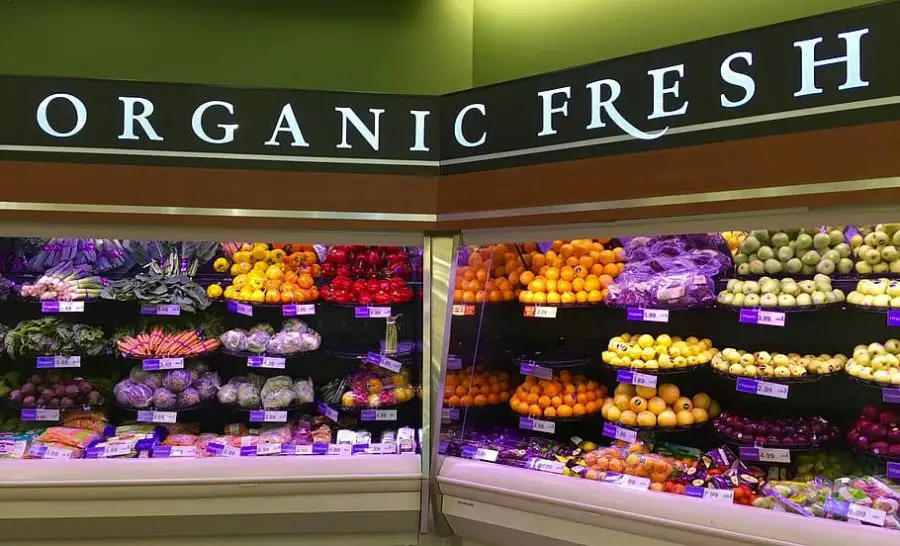
Lastly, let’s not forget resilience. In the face of unpredictable climate events, a sustainable farm with its robust soil, diverse crops, and efficient water management has better odds of weathering the storm (literally). And in business, stability often equals profitability.
Examples of successful sustainable agricultural practices
Agroforestry is one shining star in the sustainable agriculture universe.
By blending agriculture with tree planting, farmers can improve biodiversity, reduce erosion, and even find additional income sources in timber or fruit from the trees.
It’s like having an orchard and a vegetable garden, all in one!
Cover cropping is another fantastic practice. By planting specific crops in off-seasons, farmers can naturally enrich the soil and keep those pesky weeds at bay.
Then there’s the world of organic farming. By ditching synthetic chemicals and focusing on natural processes, many farmers have not only seen their land thrive but have also tapped into the booming market of organic produce.
It’s the agricultural equivalent of baking with all-natural, wholesome ingredients and the end product is just as sought-after!
Investment and returns in sustainable farming
Alright, there’s no denying it: switching to sustainable practices can sometimes require a bit of upfront investment.
Maybe it’s setting up a new irrigation system or attending workshops to learn the latest in organic pest control.
But think of it as planting a seed—it might seem small now, but give it time, care, and patience, and it can grow into a bountiful tree.
The returns on sustainable farming aren’t just monetary (though that’s a big part!). There’s also the added value of brand trust and loyalty.
As consumers increasingly champion green initiatives, businesses that genuinely commit to sustainability can find themselves with a dedicated and growing customer base.
Plus, let’s talk incentives. Around the world, many governments and organizations are recognizing the importance of sustainable agriculture.
This means grants, subsidies, and training opportunities for farmers looking to go green.
So, while there’s an initial investment, there’s also a world of support ensuring that the journey toward sustainability is as rewarding as possible.
Social and Economic Equity

When you think of farming, you might imagine sprawling fields and tractors. But let’s zoom in a little.
Behind every tomato, wheat stalk, and apple, there’s a human story—a tapestry of folks who toil, dream, and often hope for a brighter tomorrow.
Now, sustainable agriculture isn’t just about how we treat the land; it’s also about how we treat each other.
Social and Economic Equity is that chapter in our sustainable tale where we ensure everyone gets a fair slice of the pie, from the farmer in the field to the worker in the processing plant.
Ready to dive deeper into how sustainability intertwines with fairness and justice? Let’s get to it!
Fair wages and treatment for farmers and agricultural workers
Let’s kick things off with a straightforward idea: everyone deserves to be paid fairly for their hard work. It sounds simple enough, right?
But in the vast world of agriculture, ensuring that each hand that touches our food is compensated justly can be a challenge.
Sustainable agriculture pushes for practices that respect not just the earth, but also the people tilling it.
This means advocating for wages that reflect the true value of the labor and conditions that prioritize safety and well-being.
Beyond just the paycheck, it’s about creating an environment where rights are upheld and voices are heard.
In a sustainably managed setup, exploitation, and unhealthy work conditions aren’t just frowned upon they’re actively rooted out.
This could mean regular health check-ups for workers, proper safety training, or even platforms where grievances can be aired and addressed.
Remember, a happy worker isn’t just good for the soul it’s also good for the soil.
When people feel valued and protected, they’re more likely to invest their best efforts, leading to better yields and a healthier farming ecosystem.
Community involvement and benefits
Farming is more than just a solitary farmer and his field; it’s a communal effort.
Sustainable agriculture emphasizes the role of the entire community in the agricultural process.
Whether it’s local folks coming together to share tools and resources or community-driven decisions on what crops to plant, it’s all about teamwork.
And when the community is involved, guess what? The benefits flow right back.
Sustainable farms can become hubs for local employment, ensuring money stays within the community and circulates, boosting the local economy.
It’s a bit like choosing to shop at your neighborhood store rather than a distant mega-mall. The closer to home, the better for everyone!
Lastly, there’s the ripple effect. When one community embraces sustainable practices and reaps the benefits, neighboring areas take notice.
The good vibes and practices can spread, creating a larger network of communities championing both the land and each other.
It’s kind of like that joy you feel when sharing a delicious home-cooked meal with neighbors but on a much bigger scale.
Enhance Quality of Life
Imagine wrapping up a long day of work and kicking back with a sense of deep contentment, knowing you’ve not only done well for yourself but also for the world around you. That’s the dream, isn’t it?
In the realm of sustainable agriculture, it’s not just about producing food efficiently; it’s about enhancing the quality of life for everyone involved.
From the farmer who wakes up at dawn to the family enjoying a meal made from sustainable produce, the journey is all about making life a bit brighter, a tad more fulfilling.
Dive in with me, and let’s explore how farming sustainably can sprinkle a little extra joy into our daily lives.
Health benefits of consuming sustainably grown produce
First on our plate (pun intended!) are the yummy veggies and fruits grown sustainably.
Now, besides being delicious, they come packed with health perks. With fewer chemicals and more organic practices, these crops often retain more of their natural nutrients.
It’s like choosing a fresh, homemade smoothie over a store-bought one with all those additives. Your body thanks you with every sip, or in this case, every bite!
Another thing to munch on: reduced exposure to pesticides and synthetic fertilizers.
By minimizing or eliminating these chemicals, sustainable agriculture gives us produce that’s friendlier to our insides.
No one ever said, “Please pass the pesticides!” when reaching for an apple, right?
And let’s not forget the mental peace that comes from knowing your meal is earth-friendly.
Every bite of sustainably grown produce feels like a little pat on the back, an affirmation that you’re contributing to a better planet.
The importance of farmer’s well-being
In the symphony of agriculture, farmers are the maestros. When they’re happy, healthy, and supported, the entire process sings.
Sustainable agriculture places immense importance on the well-being of farmers.
It acknowledges that their mental and physical health is paramount, not just for crop yields but for the overall harmony of the farming ecosystem.
This focus on well-being means creating spaces where farmers can access health care, education, and even counseling services.
Think of it as a support system, ensuring that the hands that feed us are well-taken care of.
A well-supported farmer is also more likely to innovate, experiment, and implement best practices, leading to continuous improvement in farming methods. It’s a win-win for everyone involved!
Community and cultural preservation
Sustainable agriculture is like a time capsule, preserving age-old traditions, practices, and seeds that have been passed down through generations.
By respecting indigenous knowledge and integrating it with modern methods, sustainable farming becomes a bridge between the past and the future.
Communities often have shared rituals, songs, and tales centered around farming and harvest.
By promoting sustainable practices, these cultural treasures are celebrated and kept alive.
It’s like keeping grandma’s treasured recipes alive and savoring them with every new generation.
And when communities rally around sustainable farming, they build stronger ties.
Shared farming plots, community harvest festivals, or local farmer markets become places of connection, storytelling, and shared pride.
Through sustainable agriculture, communities don’t just preserve the land; they also nurture the heart and soul of their shared heritage.
Methods and Practices of Sustainable Agriculture
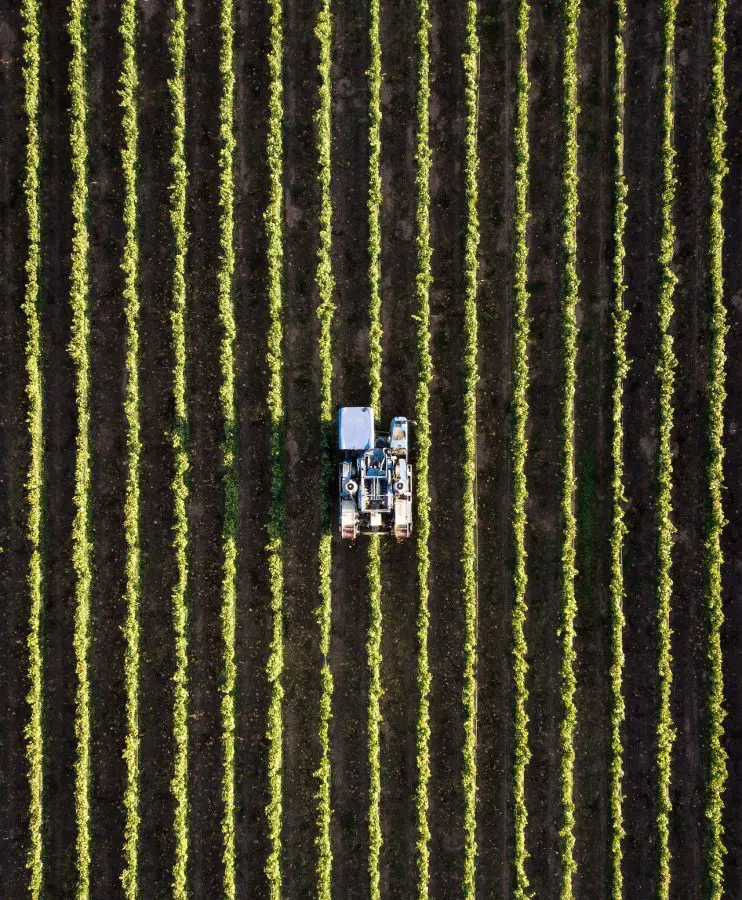
Alright, picture this: you’ve got a toolbox, and inside are all these nifty tools designed to make farming kinder to the planet and its people. Neat, right?
Well, that’s what sustainable agriculture is all about. It’s not just an idea or philosophy; it’s a collection of tangible, hands-in-the-dirt methods that bring those lofty goals to life.
So, if you’ve been wondering about the nuts and bolts the actual practices that make agriculture sustainable you’re in the right spot.
Let’s pop open that toolbox and explore some of the coolest, earth-friendliest farming methods out there.
Crop Rotation and Polyculture – The Benefits of alternating crops
Crop Rotation Rewards
Alternating crops is like giving the soil a mini-vacation! Just as our bodies need varied nutrients, soils also thrive when different crops are planted in rotation.
This method reduces the risk of soil-borne diseases and pests that might get too comfy if the same crop is planted year after year.
Nutrient Boost
Different crops have different nutrient needs and replenishment capabilities.
For instance, legumes can fix nitrogen a treat for the soil! By swapping crops, the land gets a balanced diet, ensuring it remains fertile and vibrant.
Break in Pest Patterns
Consistently planting the same crop can be an open invitation for pests to set up shop.
Alternating crops disrupt these unwelcome guests’ patterns, making it harder for them to gain a foothold in the fields.
How polyculture maintains soil health
Nature’s Mixtape
Polyculture is all about mimicking nature. In the wild, plants don’t grow in isolation they thrive in diverse communities.
By growing multiple crops together, polyculture recreates this natural setting, making soil ecosystems richer and more resilient.
Soil’s Protective Shield
With various plants growing close together, the soil is less exposed, reducing erosion and water loss.
Think of it as the soil having a cozy, protective blanket of diverse plants.
Complementary Companions
Some plants play nicely with each other. When grown together, they can benefit one another by attracting beneficial insects or repelling pests.
It’s a bit like having a buddy system underground, where each plant looks out for its neighbor.
Organic Farming

Ever caught yourself pondering about the journey your food takes before landing on your plate?
Enter organic farming, the back-to-basics approach that’s all about cultivating crops in the most natural way possible.
No synthetic shortcuts or chemical helpers here just pure, age-old farming wisdom paired with a huge dose of respect for Mother Nature.
If you’ve been curious about the magic behind those organic labels and how they make a difference in the world of agriculture, grab a cuppa, and let’s dive deep into the wholesome world of organic farming together.
Use of natural pesticides and fertilizers.
The Natural Defenders
Nature has its very own line of defense when it comes to pesky invaders, and organic farming taps right into that.
Instead of synthetic chemicals, organic farmers reach for natural solutions like neem, garlic, or even beneficial insects like ladybugs.
It’s like using grandma’s trusted home remedies to fend off a cold rather than reaching for over-the-counter meds.
Nutrient-Packed Compost
Instead of factory-made fertilizers, organic farming is all about that rich, homemade compost made from decomposed plant and animal materials.
This compost not only feeds the plants but also enhances the soil structure. It’s like whipping up a nutrient-dense smoothie for the soil full of all the good stuff!
Healthy Soil, Healthy Plants
With the use of natural fertilizers, the soil becomes alive with beneficial microbes and fungi.
These little buddies help plants absorb nutrients better and fend off diseases.
In a way, it’s like giving plants a robust immune system boost, in the natural way.
Advantages over chemical-based farming
Safety First
First and foremost, without synthetic chemicals, there’s a much lower risk of toxic residues on your food or in the groundwater.
It’s a sigh of relief for those of us who get a little uneasy thinking about consuming unknown chemicals with our salad.
Soil’s Best Friend
Chemical-based farming can, over time, deplete the soil, making it less fertile and more prone to erosion.
On the other hand, organic methods tend to preserve and enhance soil health.
Think of it as investing in a good skincare routine; with a little love and attention, the results are radiant and long-lasting.
Cost and Earth Efficient
While the initial transition to organic might feel like a pinch, in the long run, farmers often find themselves saving on expensive chemicals.
Plus, by reducing synthetic inputs, they’re contributing to a healthier planet. It’s a bit like switching to LED bulbs – a little change for a brighter (and more cost-efficient) future.
Integrated Pest Management (IPM)
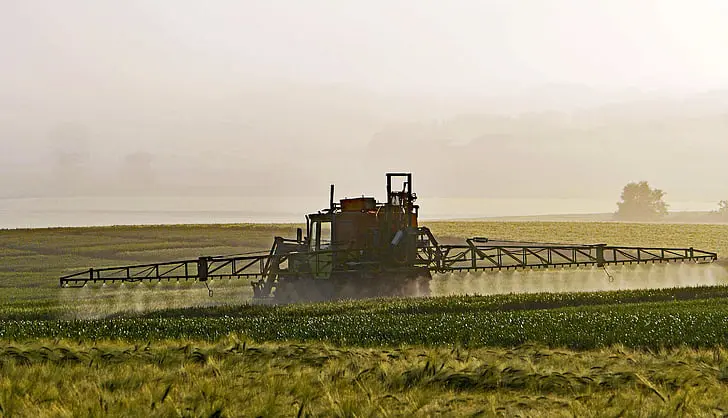
Alright, let’s talk about one of farming’s biggest challenges: pests. They’re like that uninvited guest who crashes your party and won’t leave, no matter how many hints you drop.
But what if, instead of resorting to drastic measures, there was a smarter, more harmonious approach?
Welcome to the world of Integrated Pest Management (IPM). It’s a strategy that’s less about warfare and more about understanding, collaborating, and keeping things in balance.
If you’ve been looking for a middle ground between let them be and total annihilation, IPM is here to show you the way. Ready to dive in?
Holistic approach to pest control
The Big Picture Perspective
IPM isn’t about short-term fixes or quick wins. Instead, it’s like playing a thoughtful game of chess with nature, always thinking several moves ahead.
It focuses on understanding the entire ecosystem, examining how different elements interact, and then making well-informed decisions based on that knowledge.
Knowledge is Power
Before jumping into action, IPM emphasizes the importance of monitoring and identifying pests.
It’s all about knowing who the real culprits are and distinguishing them from harmless or even beneficial insects.
Think of it as being a detective in your garden, magnifying glass in hand, always eager to crack the case!
Preventive Action Over Reactive
An ounce of prevention is worth a pound of cure, right? Well, IPM takes that seriously.
By adopting practices that make the environment less inviting for pests like rotating crops, selecting resistant varieties, or adjusting planting times it aims to prevent infestations before they even start.
Importance of natural predators and minimal use of chemicals
Nature’s Own SWAT Team
Nature is brilliant in maintaining balance. For almost every pest out there, there’s a natural predator ready to feast.
By promoting the presence of these beneficial insects like ladybugs, spiders, and lacewings IPM leverages nature’s own pest control squad.
It’s like having an elite security detail guarding your crops, courtesy of Mother Nature herself.
Chemicals: The Last Resort
In the world of IPM, chemicals aren’t the first line of defense; they’re the very last.
And when they’re used, it’s done judiciously, targeting specific pests and ensuring minimal impact on the good guys.
It’s a bit like using that powerful cleaning agent in your home – only when needed, and with utmost care.
Harmony and Balance Over Domination
The core philosophy of IPM is coexistence, not conquest.
Instead of trying to dominate or eradicate, it seeks to maintain a balance where pests are kept in check without causing harm to the broader ecosystem.
It’s a gentle reminder that we’re all in this together, living on one shared planet.
Conservation Tillage
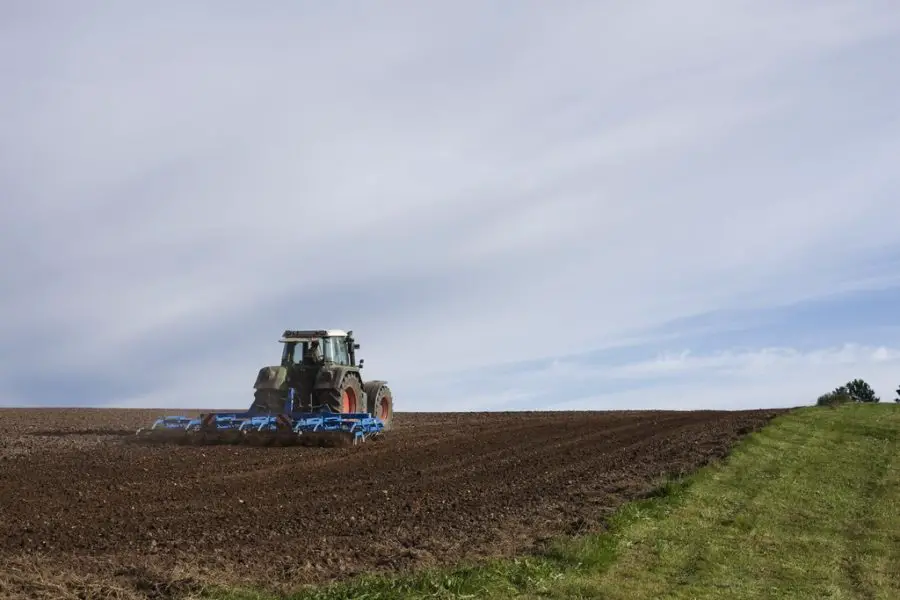
Ever thought about how the soil under our feet gets treated during farming?
It’s easy to overlook, but the way we handle this precious resource can make a world of difference.
Let’s chat about conservation tillage a farming superstar that’s all about showing some love and respect to the earth.
Rather than the traditional approach of turning the soil upside down each season, conservation tillage gently whispers, Let’s tread lightly.
Curious about how this technique is shaking things up (or rather, not shaking the ground up too much) in the farming world? Let’s dig in, but not too deep!
Soil protection methods
Leave a Cover
One of the standout features of conservation tillage is the practice of leaving crop residues on the field.
It’s like giving the soil a snug blanket, keeping it warm and protected. These residues not only shield the soil from erosion but also provide it with organic matter as they decompose.
So, the next time you see a field dotted with last season’s crop leftovers, know that it’s intentional and pretty darn smart.
Minimal Disturbance
Traditional tilling can sometimes feel like a rigorous workout for the soil.
With conservation tillage, the soil gets a gentler touch. Tools are used to create narrow slots or furrows for planting seeds without disturbing the entire surface.
It’s the equivalent of doing a light yoga session instead of a heavy gym workout; less stress, more mindfulness.
Natural Weed Management
By not turning the soil over entirely, many potential weed seeds remain buried and don’t get a chance to sprout.
This can be a game-changer in reducing the need for herbicides. Think of it as nature’s way of saying, Not today, weeds.
Benefits of reduced tillage
Soil Structure Supremacy
Reduced tillage means the soil structure remains largely intact.
This is awesome because well-structured soil promotes good water infiltration, reduces run-off, and provides space for roots to grow freely.
It’s like ensuring the foundation of a house is solid; everything built upon it is more stable and robust.
Water-Wise Farming
Areas practicing conservation tillage often notice improved water retention in the soil.
With the protective cover of residues, evaporation is minimized. In the long run, this can mean less irrigation and more resilience during dry spells.
Cost and Energy Efficient
Less tilling means fewer passes over the field with heavy machinery.
For farmers, this translates to savings in fuel, equipment wear, and time.
Plus, there’s the added bonus of reduced greenhouse gas emissions. So, while the land breathes a sigh of relief, so does the farmer’s wallet and, well, the planet.
The Role of Technology in Sustainable Agriculture

You know how we sometimes marvel at the latest smartphone update or get excited about the newest gadget?
Well, farming has its own set of cool technological breakthroughs, and they’re helping shape the future of sustainable agriculture.

Picture drones scanning vast fields, smart sensors detecting soil moisture, and apps that help farmers predict the best planting times.
If you’re imagining a futuristic farm where tech meets nature, you’re on the right track!
Ready to explore how technology is playing matchmaker for modern farming and sustainability? Let’s dive into the digital side of dirt and crops!
Precision Agriculture and its Benefits
The Fine-tuned Farming Approach
Precision agriculture is all about fine-tuning the farming process. Instead of a one-size-fits-all approach, it’s about giving each patch of land exactly what it needs.
It’s a bit like tailoring a suit; the fit is just right, making everything look and feel better.
Resource Efficiency
With precision agriculture, everything from water to fertilizers is used optimally.
By knowing precisely where and when to irrigate or which part of the field needs more nutrients, waste is minimized.
It’s the difference between using a sprinkler and a dropper, ensuring every drop counts.
Yield Boost
Being precise often leads to better results. With the right inputs at the right times and in the right places, crops can thrive.
Farmers are often pleasantly surprised to find that their yields can improve without any increase in resources.
Use of Drones, AI, and other Modern Tools for More Efficient Farming

Drones: The Sky-high Scouts
Drones have become the eyes in the sky for many farmers. With their ability to cover vast areas quickly, they provide invaluable data about crop health, irrigation levels, and even pest infestations.
Imagine having a bird’s-eye view of everything, helping spot potential issues before they become major problems.
AI: The Brain Behind the Operation
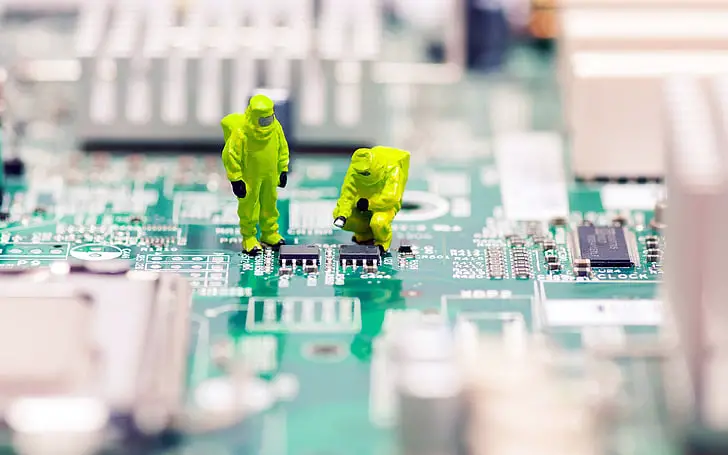
Artificial Intelligence isn’t just for sci-fi movies. It’s helping farmers make sense of the vast amounts of data they collect.
By analyzing patterns and predicting trends, AI can guide decisions, from when to plant to how to combat diseases.
Think of it as a digital farming guru, always ready with insights and suggestions.
Modern Tools: Doing More with Less
From soil sensors that alert farmers about moisture levels to apps that help track weather patterns, modern tools are revolutionizing farming.
These gadgets and software solutions are all about making farming smarter, not harder.
It’s as if the entire farm got a tech upgrade, running on the latest, most efficient operating system.
Challenges and Criticisms
Alright, let’s flip the coin for a moment. While sustainable agriculture is doing some fantastic things for our planet and our plates, it’s not all sunshine and rainbows.
Just like your favorite superhero movie where challenges arise and criticisms loom, the journey of sustainable farming has its hurdles too.
But hey, understanding these challenges is the first step in addressing them.
So, are you ready to dive into the nitty-gritty and uncover the other side of the sustainable agriculture story? Let’s roll up our sleeves and get into it!
Common Criticisms of Sustainable Agriculture
Yield Concerns: Quantity vs. Quality
One of the most voiced criticisms is that sustainable farming might not produce as much yield per acre as conventional farming.
Critics argue that with a growing global population, we need every bit of food we can produce.
They often liken it to choosing between a buffet and a gourmet meal and while the latter might offer higher quality, the former ensures everyone gets a plate.
Initial Costs: The Steep Climb Before the View
Switching to sustainable farming methods often requires a significant upfront investment.
There’s new equipment to buy, training to undergo, and sometimes even a complete shift in farming practices.
Some farmers liken it to renovating an old house. It might be costly and time-consuming initially, but the long-term benefits can outweigh the starting pains.
Knowledge and Skill Gap: The Learning Curve
Sustainable farming often involves a departure from traditional methods.
This means farmers have to relearn or adapt, which can be daunting. It’s a bit like switching from a manual to an automatic car; the basics are the same, but the nuances can be tricky.
Market Uncertainties: The Sustainable Price Tag
While there’s a growing market for sustainably produced food, the prices can fluctuate.
Critics argue that the unpredictability might deter farmers from making the sustainable switch.
It’s akin to fashion trends; what’s popular and profitable today might not be tomorrow.
Perception and Skepticism: Is It All Just Greenwashing?
With the rise in popularity of everything green, there’s a concern that some sustainable claims might be more about marketing than genuine practices.
Detractors suggest that without proper oversight and definitions, sustainable could become just another buzzword.
Imagine buying something labeled handmade only to find it’s mass-produced, the essence of authenticity gets lost.
Addressing These Challenges for the Future
Collaborative Research: Teamwork Makes the Dream Work
To tackle the yield concern, there’s a growing push for collaborative research.
By combining traditional agricultural knowledge with modern techniques, the aim is to maximize both quantity and quality.
It’s kind of like merging family recipes with modern culinary techniques to create a dish that’s both hearty and refined.
Financial Support and Incentives: A Helping Hand
Acknowledging the initial investment hurdle, governments and organizations are stepping up.
By providing subsidies, grants, and low-interest loans, the transition to sustainable farming becomes more accessible.
Think of it as scholarships for aspiring students a financial boost to help them reach their potential.
Training and Education: Knowledge is Power
To bridge the skill gap, there’s a focus on offering tailored training programs for farmers.
These workshops, courses, and seminars ensure that they’re well-equipped to adopt sustainable practices.
It’s like those masterclasses you see online, but for farming turning novices into experts.
Market Stability Through Community Support: Going Local
Farmers’ markets, CSA programs, and community-supported fisheries are creating stable avenues for sustainably produced goods.
When communities rally behind their local farmers, it provides a consistent demand, stabilizing prices.
It’s the same warm, fuzzy feeling of shopping at a neighborhood store instead of a faceless conglomerate.
Clearer Standards and Labels: No More Guesswork
To tackle the skepticism around greenwashing, there’s a push for clearer, more stringent standards and labels.
By ensuring that ‘sustainable’ labels are backed by rigorous practices, consumers can trust their purchases.
Public Awareness and Advocacy: Spreading the Word
Educating the public about the benefits and challenges of sustainable agriculture can shape market demand.
By understanding the real value of sustainably produced food, consumers can make informed choices.
Remember the first time someone explained to you the difference between fast fashion and ethically made clothes? It’s all about sparking that aha! moment.
FAQ Section: Sustainable Agriculture’s Main Goals & Practices

With the increasing interest in sustainable agriculture, many readers often have pressing questions about its nuances and practical implications.
In this FAQ section, we’ve addressed some of the most commonly asked questions.
Q: Isn’t sustainable agriculture simply the same as organic farming?
A: No, while they share similarities, they are not identical.
Organic farming strictly avoids synthetic chemicals, GMOs, and certain farming methods, focusing on natural alternatives.
Sustainable agriculture, on the other hand, is a broader concept. It encompasses organic farming but also emphasizes the long-term sustainability of the soil, ecosystem, and farming community, regardless of whether synthetic measures are employed.
Sustainability also includes economic viability and social equity.
Q: How can sustainable agriculture be profitable when it might produce lower yields than conventional methods?
A: While it’s true that some sustainable practices might initially produce lower yields, they often prove to be more economically viable in the long run.
Sustainable methods can lead to lower input costs, reduced dependency on expensive chemicals, and premium pricing for sustainably grown products.
Additionally, sustainable farms often experience fewer pest outbreaks and soil problems over time, leading to consistent and sometimes even improved yields.
Q: With the global population rising, can we really afford to shift entirely to sustainable agriculture?
A: This is a concern many people share. However, sustainable agriculture, when practiced effectively, has the potential not only to meet the global food demand but also to do so in a manner that’s environmentally friendly and socially just.
It’s essential to understand that the goal isn’t merely to produce food but to produce it sustainably without depleting resources for future generations.
Q: How can consumers support sustainable agriculture?
A: Consumers play a vital role in promoting sustainable agriculture. They can:
Purchase products from local, sustainably-managed farms.
Support policies and initiatives that favor sustainable agricultural practices.
Educate themselves about sustainable practices and share the knowledge.
Reduce food wastage, as a significant amount of resources go into food that’s never consumed.
By making informed choices, consumers can drive demand for sustainably produced goods, thereby encouraging more farmers to adopt these practices.
Sustainable Agriculture’s Main Goal Conclusion
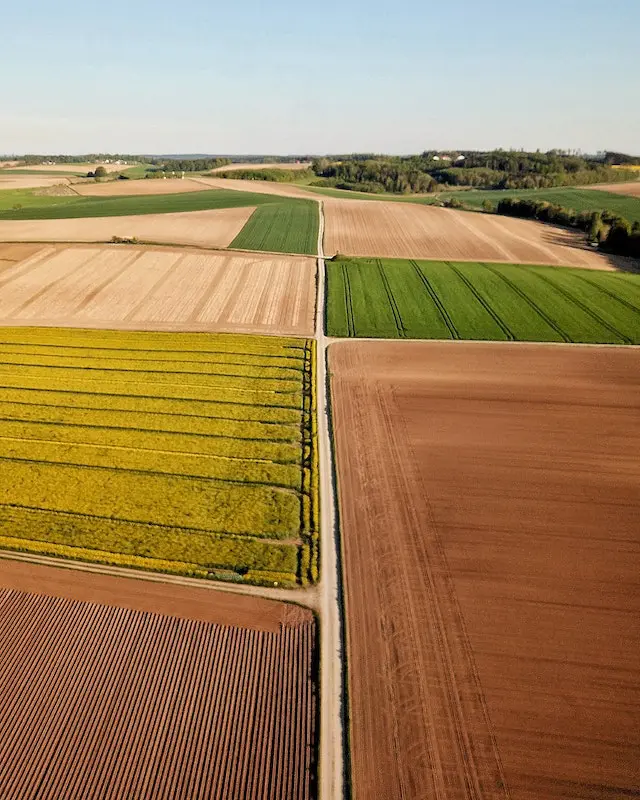
Whew, what a journey we’ve been on together! From diving deep into what sustainable agriculture is all about, to navigating its challenges and envisioning a greener future, it’s been quite the adventure.
But as with any good story, it’s time to tie up the loose ends and wrap up our exploration.
Grab your metaphorical sunhat, and let’s revisit the highlights and look forward to a world where every farm is a beacon of sustainability. Ready for the grand finale?
Recap of the Importance of Sustainable Agriculture’s Main Goal
More Than Just Farming:
Sustainable agriculture isn’t just about producing food; it’s a philosophy, a way of life.
Remember how we spoke about its holistic approach? It’s that beautiful intertwining of environmental health, economic profitability, and the well-being of all involved.
Imagine a tapestry, where each thread represents a benefit of sustainable farming, and when woven together, creates a future we all want to be a part of.
Protecting Mother Earth:
Our planet is pretty awesome, right? And it’s our only home.
By embracing sustainable agriculture, we’re ensuring that our soils remain fertile, our waters stay clean, and the air remains pure.
It’s kind of like treating Earth as we would our own garden with care, love, and a vision for future blooms.
Building a Just World:
Economic stability, social equity, and enhanced quality of life aren’t just nice-to-haves they’re essentials.
Sustainable farming practices prioritize these, ensuring that every individual, from farmer to consumer, benefits.
Think of it as ensuring everyone at the dinner table gets an equal and hearty share.
A Call to Action: Support for Sustainable Practices and Local, Sustainable Farmers
Your Choice, Your Impact:
Every time you head to the grocery store or local market, remember you’re making a choice.
By choosing to support sustainable practices, you’re not only getting quality products but also shaping the future of agriculture.
It’s like giving a standing ovation to the farmers and practices that truly deserve it.
The Local Heroes:
Local, sustainable farmers are the rockstars of this movement.
By buying their produce, you’re giving a thumbs-up to their hard work and dedication.
It’s a little like having a favorite local band; the more you support them, the bigger and better they become.
Talk About It, Be About It:
Conversations can spark change. Share your knowledge about sustainable agriculture with friends, family, and anyone who’d listen.
Organize or attend community meetings, and advocate for more sustainable practices in your local schools and businesses.
Basically, be the change-maker the world needs! And hey, who knows?
Your passion might just be the catalyst someone else needs to hop on board the sustainable train.

